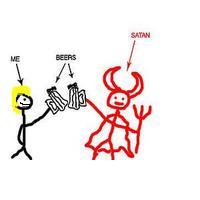The author mentions Calton Hill as being an infamous gay cruising site. Apparently, this still is true (you really can find anything on Wikipedia. Traffic cone?) There is also a cemetery there where David Hume is buried.
This is two books in a row (the first being Trainspotting) that mentioned the heroin and AIDS problems in Edinburgh in the early 90's. According to this article, it's making a comeback. At least Edinburgh isn't the AIDS capital of Europe-that's Barcelona, at least as of 2003. Here's another story that takes it full circle, saying Trainspotting is to blame for their specious reputation (funny they mention Begbie though. He was one of the very few abstainers in the book.)
To get these images of the British Isles out of my head (skag use and gentlemen's clubs where junkies are abused for kicks), here's a list of some trivia about Edinburgh's famous Castle, taken from its website:
- The first building on the site was by David I and included a Chapel dedicated to his mother Margaret, in 1130. The St. Margaret Chapel is still standing
- The crown jewels of Scotland, The Honours, are on display there. They were created in the 16th century. They were first used in the coronation of Mary Queen of Scots. They were buried in 1650 to hide them from Oliver Cromwell (not to worry, there's a malaria carrying mosquito with his name on it) and later from the Nazis.
- The Royal Palace is where Mary Queen of Scots gave birth to James, later King of England.
- Mons Meg, one of the world's oldest cannons at 550 years, is on display there. Although between 1754-1829, the English had it on display at the Tower of London. Thank Sir Walter Scott for convincing the King to return it.

No comments:
Post a Comment